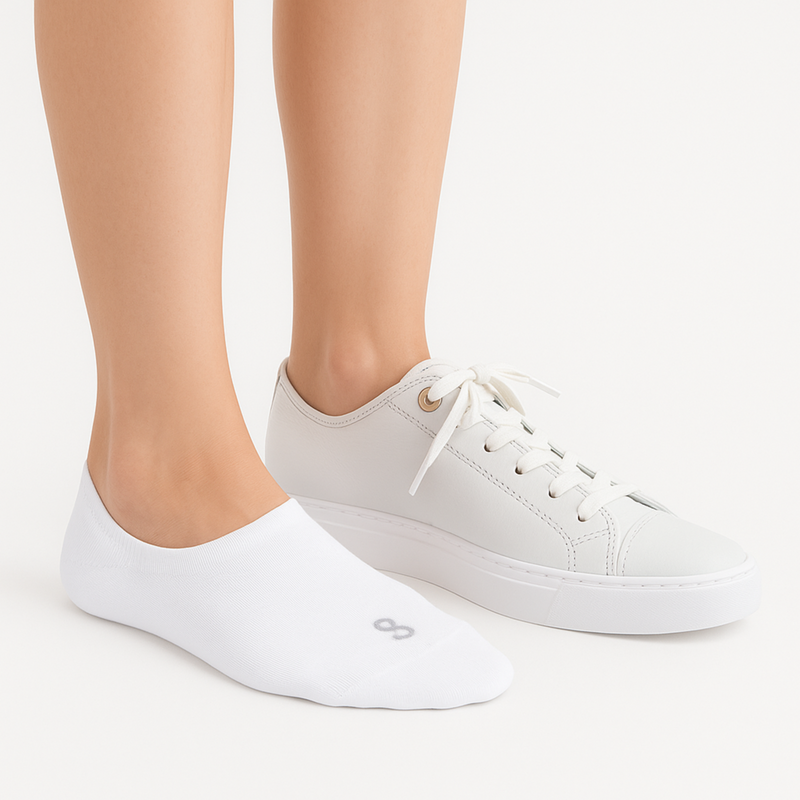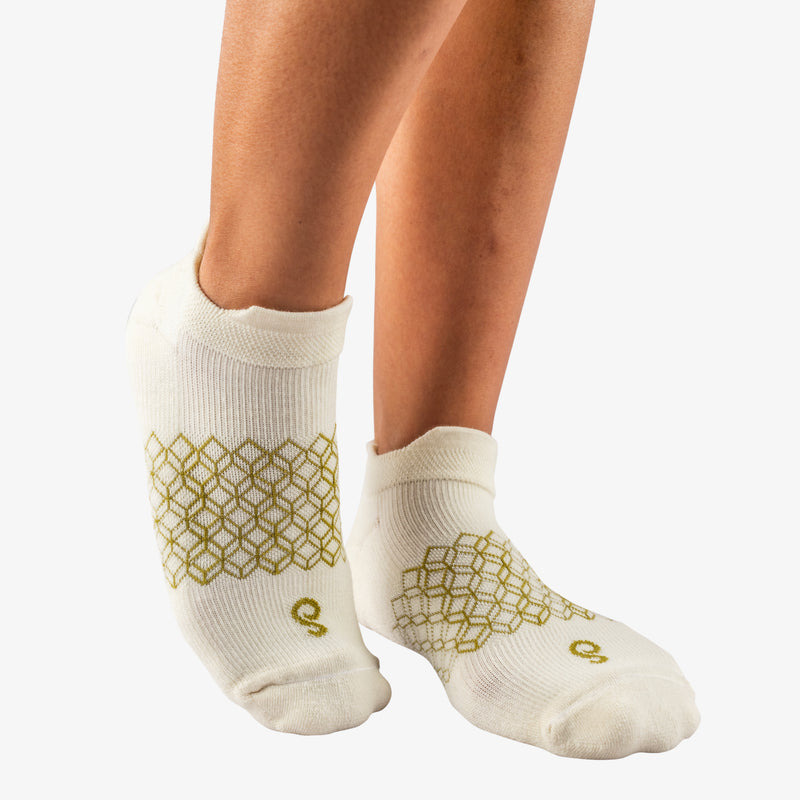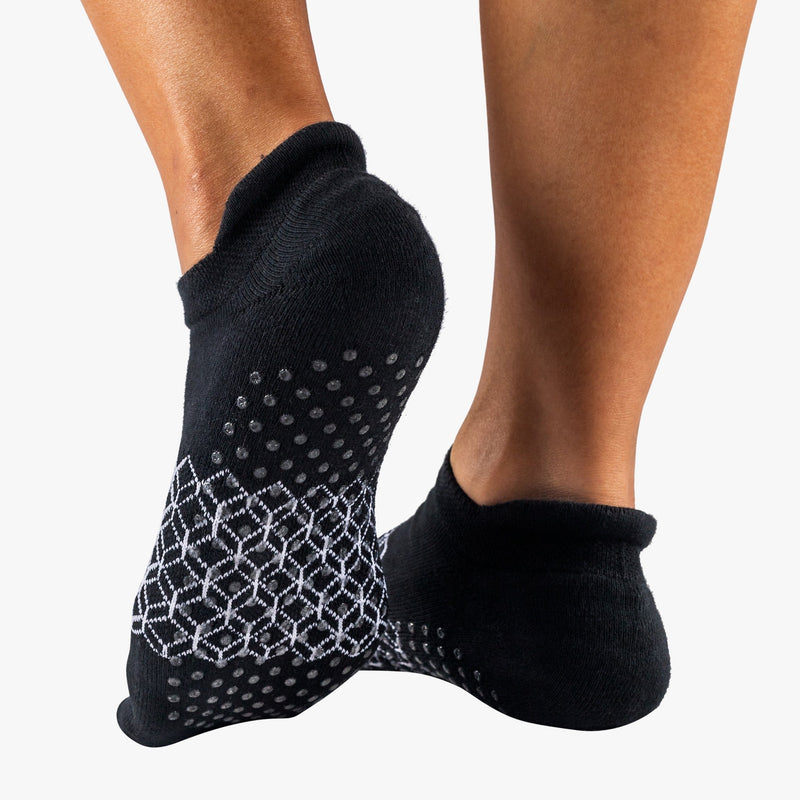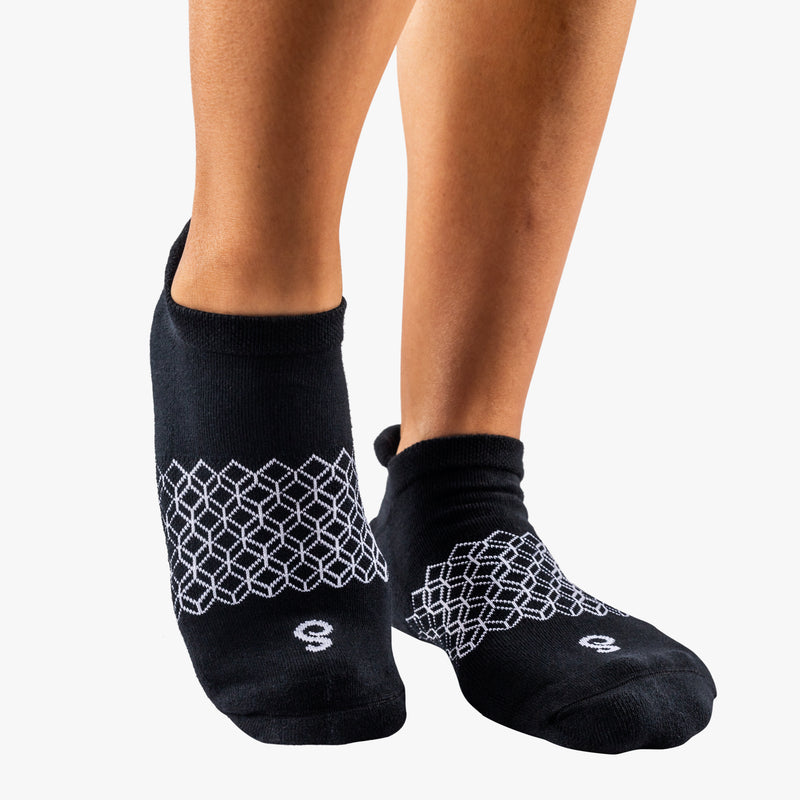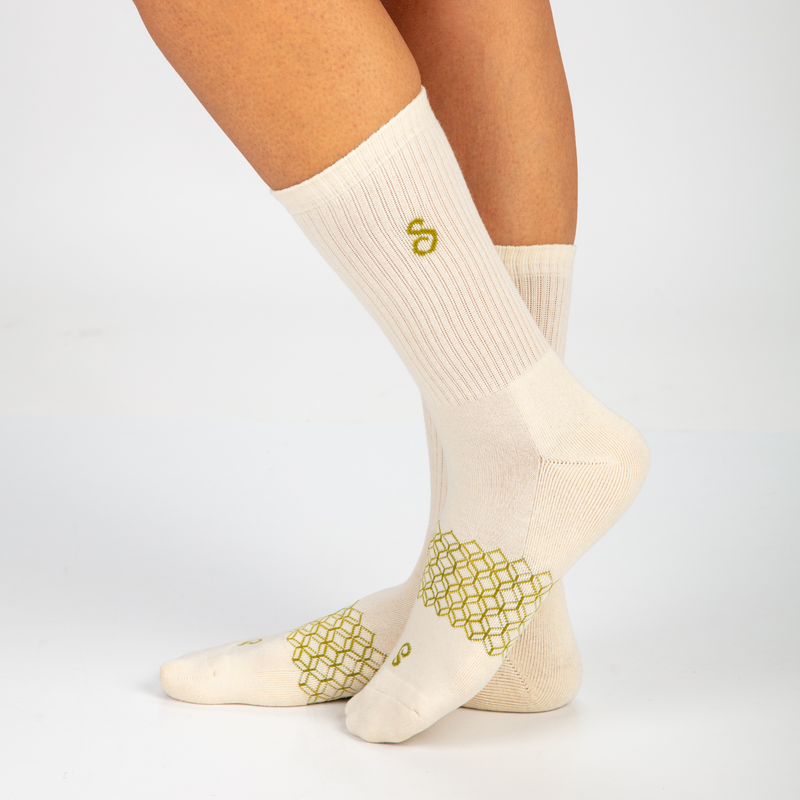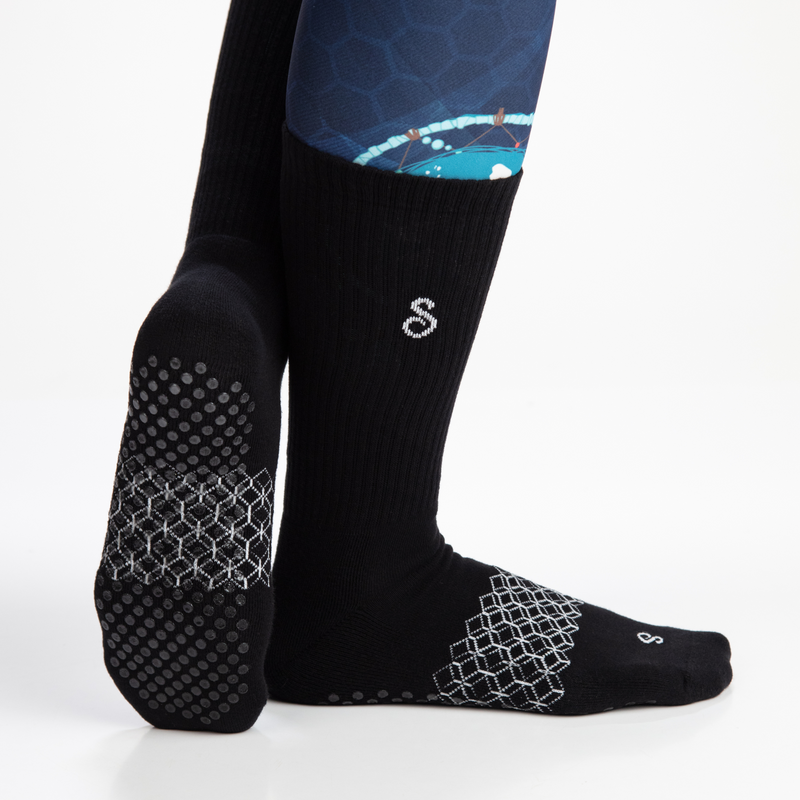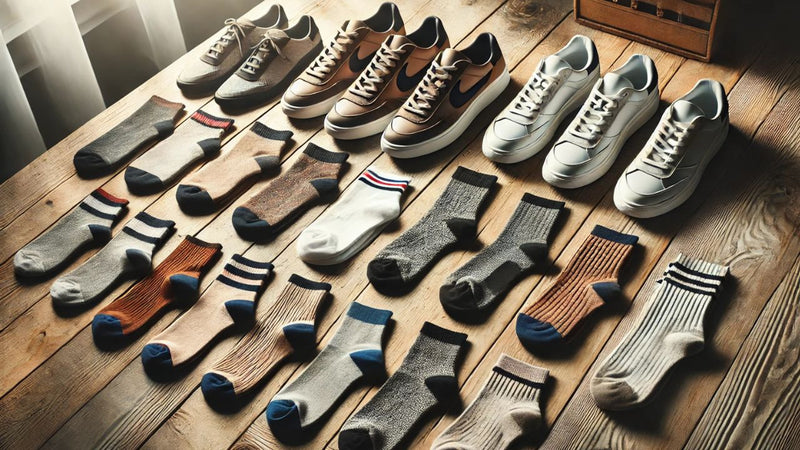
Finding the right socks for trainers can significantly impact comfort and performance. The best socks for trainers provide excellent breathability, moisture management, and support, ensuring that feet stay dry and comfortable during any activity. With various materials and styles available, selecting the right pair can enhance both the running experience and daily wear.
Socks designed specifically for trainers offer features like cushioning, compression, and fit tailored for athletic purposes. Understanding sock height categories and how they influence comfort during different activities can further guide the choice. From cotton blends for everyday use to specialised synthetic fabrics for running, the options are plentiful.
Investing time in selecting the right socks is essential for anyone who spends significant time in trainers. Not only do they support foot health, but they can also enhance overall performance on the go.
Key Takeaways
- The right socks enhance comfort and performance during activities.
- Material choices affect breathability and moisture control.
- Evaluating fit and style is crucial for optimal support.
Importance of Choosing the Right Socks for Trainers
Choosing the right socks for trainers is crucial for both comfort and performance during physical activities. The right pair can prevent discomfort and enhance the overall workout experience.
Socks act as a barrier between the foot and the shoe, helping to cushion the foot and reduce the risk of blisters. A good fit is essential; socks that are too tight can cause pinching, while too loose socks may lead to slipping.
Material plays a vital role in sock performance. Synthetic fabrics like nylon and propylene are effective for moisture-wicking, keeping the feet dry during intense workouts. Cotton, although comfortable, tends to retain moisture, which may lead to blisters.
Key factors to consider include:
- Cushioning: Extra cushioning is beneficial for high-impact activities, providing support and comfort.
- Moisture Management: Look for socks designed to wick away sweat.
- Fit: Ensure the socks are snug but not restrictive.
Choosing specialised trainer socks can greatly affect workout performance. Many options available include arch support and reinforced heels, which cater to various foot types and activities. Investing time in selecting the right socks can significantly enhance both comfort and performance during exercise.
Materials and Fabric Types
Choosing the right materials for socks is crucial for comfort, performance, and durability. Different fabrics offer unique benefits, making them suitable for various activities.
Merino wool is a popular choice, especially for its moisture-wicking properties. It helps regulate temperature and keeps feet dry, which can prevent blisters.
Cotton, while comfortable, absorbs moisture and can lead to damp feet, making it less ideal for active wear.
Synthetic materials like polyester and nylon are often blended in socks. They provide excellent breathability and quick-drying capabilities. These fabrics are also durable and resistant to wear.
Bamboo is gaining popularity due to its natural moisture-wicking and antibacterial properties. It offers a soft feel and is environmentally friendly.
Acrylic is another synthetic option that mimics wool’s insulating properties but is typically more affordable.
When selecting socks for trainers, consider the following materials:
| Fabric Type | Key Benefits |
|---|---|
| Merino wool | Moisture-wicking, temperature regulation |
| Cotton | Comfortable but retains moisture |
| Synthetic | Breathable, quick-drying, durable |
| Bamboo | Antibacterial, soft, eco-friendly |
| Acrylic | Insulating, cost-effective |
Each of these materials has its strengths and is suited for different needs, making it essential to choose wisely based on activity level and personal preference.
Main Trainer Sock Height Categories
When selecting socks for trainers, understanding the various heights can enhance comfort and performance.

No-show socks (or "invisible socks") sit just below the ankle. They provide a minimalist look and are ideal for low-cut trainers, offering a discreet option with a focus on breathability.
Ankle socks extend slightly above the ankle bone. They provide additional coverage and are suitable for casual wear or light sports activities while staying hidden in most trainers.
Quarter socks rise higher than ankle socks, typically reaching up to the mid-ankle. This height offers better protection against abrasions and is suitable for both casual wear and active use.
Crew socks sit below the calf, providing ample coverage and cushioning. They are commonly used in athletic activities and offer additional support during longer workouts.
Mid-calf and calf socks extend higher, reaching the middle of the calf and just over the calf, respectively. These styles are particularly useful for runners and provide extra warmth and support, especially in colder weather.
Each height serves a unique purpose and should be chosen based on the activity and preferred style. Knowing these categories helps in selecting the right pair of socks for any training session.
Fit and Comfort Considerations
When selecting socks for trainers, proper fit is essential for comfort during workouts. An ill-fitting sock can lead to blisters, discomfort, and reduced performance.
Key Factors to Consider:
-
Size: Ensure the socks fit snugly without being too tight. A sock that is too loose may bunch up and create friction, while an overly tight sock can restrict circulation.
-
Length: Different lengths serve varying purposes.
- No-show socks are ideal for low-cut trainers, providing minimal visibility.
- Ankle socks offer more coverage and versatility.
- Crew socks are better suited for high-top trainers and cooler conditions.
Material Matters:
Selecting the right fabric impacts both comfort and moisture control. Breathable materials such as Coolmax wick away moisture, helping to keep feet dry. Bamboo and cotton blends also provide comfort and breathability.
Cushioning and Support:
Light cushioning in the sole can enhance comfort, particularly during high-impact activities. Look for socks with support features like arch support to improve stability and reduce fatigue.
Seam Construction:
Seamless construction socks reduce friction against the foot. This can significantly enhance comfort, particularly for longer workouts. It’s worth considering individual foot shape and any specific health conditions when making a selection.
Breathability and Moisture Management
Breathability is a critical factor when selecting socks for trainers. It allows for proper air circulation, which helps regulate foot temperature.
Materials such as Merino wool and Coolmax are often recommended for their moisture-wicking properties. These fabrics draw sweat away from the skin, keeping feet dry and comfortable.
When evaluating socks, consider the following aspects:
- Ventilation: Look for socks with mesh panels that enhance airflow.
- Fit: A snug fit without being overly tight prevents bunching and allows for better moisture management.
- Cushioning: Adequate cushioning in high-impact areas provides comfort while maintaining breathability.
Compression socks can also aid in moisture management. They offer support without restricting airflow. However, the compression should not be too tight to interfere with breathability.
Choosing the right socks can enhance performance. It mitigates the risk of blisters and other foot issues related to moisture buildup.
For active use, socks designed specifically for running or cross-training provide targeted features that promote dryness and comfort. Many options are available that blend style with functionality, ensuring that users can perform at their best while feeling great.
In summary, selecting socks with excellent breathability and moisture management is essential for anyone looking to maximise their performance in trainers.
Durability and Longevity
Durability and longevity are critical factors when selecting the best socks for trainers. High-quality materials and specific construction techniques contribute significantly to how well socks hold up over time.
Reinforced Heel and Toe Areas
Reinforced heel and toe areas are key features that enhance durability. These sections are subject to the most wear and tear during training. Brands like Stance incorporate reinforced designs, improving resistance against holes and fraying.
Benefits of Reinforcement:
- Increased Lifespan: Reinforcement provides additional material where it’s needed most.
- Comfort: Extra cushioning in these areas can enhance overall comfort during activity.
Durable socks with reinforced heels and toes maintain shape and integrity longer, making them a smart choice for regular training.
Quality of Construction
The quality of construction plays a vital role in sock longevity. Socks crafted from premium materials, such as Merino wool, offer superior durability and moisture-wicking properties. For example, products that utilise organic Merino wool not only last longer but also provide enhanced comfort.
Key Construction Elements:
- Seam Strength: Double stitching or reinforced seams prevent ripping.
- Material Selection: Quality fabrics withstand frequent washing and wearing without degrading.
Investing in well-constructed socks ensures they remain effective and comfortable throughout their lifespan, making them worth the investment.
Specialised Features for Athletic Use
Athletic socks are designed with specific features that enhance performance and comfort during physical activities. Key considerations include arch support, cushioning, and grip and stability, which play pivotal roles in the overall experience for athletes.
Arch Support
Arch support is crucial for properly aligning the foot during movement. Socks with arch support can reduce fatigue and discomfort, allowing for longer training sessions.
These socks often incorporate elastic bands or specific weaving techniques that elevate the arch area. This feature helps to distribute pressure evenly, reducing the risk of cramping and injuries.
Athletes should look for socks that provide adequate arch support tailored to their foot type, ensuring a snug fit that enhances performance. Products like the ones offered by ASICS include such designs that cater to varying arch shapes.
Cushioning
Cushioning plays a vital role in shock absorption, which is essential during high-impact activities like running or jumping. Athletic socks featuring targeted cushioning in key areas, such as the heel and toe, can significantly enhance comfort.
These cushioned socks reduce the risk of blisters and provide better insulation against temperature changes. Moreover, the material used affects the quality of cushioning; synthetic fibres and merino wool are preferred for their moisture-wicking properties.
When selecting socks, athletes should consider the thickness of the cushioning, as this varies by preference and activity type, ensuring adequate support without compromising performance.
Grip and Stability
Grip and stability are paramount for athletes, especially in activities requiring quick movements and changes of direction. High-performance socks often include specialised grips or silicone patterns to prevent slippage within shoes.
These features enhance stability and boost confidence during workouts or competitions. A well-fitted sock that stays in place contributes to reduced distractions and maximises athletic output.
Athletes should seek socks that blend grip properties with appropriate ventilation, ensuring feet remain cool and dry while also providing high levels of stability during physical exertion.
Maintenance and Care Tips
Proper maintenance of socks can extend their lifespan significantly. Following a few simple care tips ensures they remain comfortable and stylish.
Washing
- Sort by Colour: Wash similar colours together to prevent bleeding.
- Wash Inside Out: Turning the socks inside out reduces bobbling and improves cleaning effectiveness
- Use Gentle Cycle: Select a gentle cycle with cold water to minimise wear.
- Use a Lingerie Bag: Enclosing your socks within a lingerie bag further reduces friction with other clothing items and will reduce bobbling/pilling.
- Avoid Fabric Softeners: These can break down moisture-wicking properties.
Drying
- Air-Dry If Possible: Lay socks flat to dry rather than using a tumble dryer. This prevents shrinking and fabric damage.
- Avoid Direct Sunlight: Prolonged exposure can cause colours to fade.
Storage
- Store Folded: Keep socks folded in pairs to maintain shape and avoid stretching.
- Avoid Damp Areas: Always store in a dry environment to prevent mould and odours.
Repair
- Mend Small Holes: Address small rips immediately to prevent further damage. Darning or sewing can restore functionality.
For enhanced durability, consider choosing materials designed for endurance. High-quality socks often come with care recommendations from brands, such as those found in guides from hipSwan, Socks to Be You and schuh. Proper care will ensure he, she, or they enjoy their favourite trainers to the fullest.
Top Brands and Models
When selecting the best socks for trainers, several brands consistently stand out for their quality and performance. Here are some of the top options:
1. Nike
Nike offers a range of trainer socks designed with moisture-wicking fabrics. The Nike Elite Socks provide comfort and support during workouts.
2. Adidas
Known for its durability, Adidas' Adizero Crew Socks feature a lightweight design and arch support, ideal for running.
3. Puma
Puma's Performance Ankle Socks are made with breathable materials and strategic cushioning. They ensure a secure fit while promoting airflow.
4. Lululemon
The Lululemon Power Stride Socks are popular for their cushioning and seamless construction, perfect for running and other athletic activities.
5. Falke
Falke's Cool Kick Socks utilise advanced fabric technology for temperature regulation and moisture management, making them excellent for vigorous exercise.
6. hipSwan
UK-based hipSwan is a relative newcomer to the sock market. The brand is distinguished by focusing on sustainable, natural yarns such as organic combed cotton and merino wool. Their Dash Trainer Socks utilise superfine merino wool as the base yarn for natural temperature regulation and moisture wicking, making them an excellent choice for vigorous activities like golf, cycling, and pickleball.
7. H&M
For a budget-friendly option, H&M offers stylish socks that deliver decent performance during casual wear and light sports.
Choosing the right socks can enhance comfort and prevent blisters during various activities. Each brand has unique features tailored to fit specific needs.
Evaluating Customer Reviews and Ratings
Customer reviews provide valuable insights into the performance and comfort of socks designed for trainers. By analysing feedback, potential buyers can make informed choices.
Key aspects to consider when evaluating reviews include:
- Comfort: Many users highlight the importance of cushioning and fit. Comfortable socks reduce blisters and maximise performance.
- Durability: Reviews often mention how well socks withstand regular use. Long-lasting materials are crucial for frequent training.
- Moisture Management: Customers frequently comment on a sock's ability to wick moisture away from the skin. This feature is essential for preventing discomfort during workouts.
- Size and Fit: Sock sizing can vary among brands. Reviews that discuss fit help identify which options cater to individual foot shapes.
Star ratings are also important. For example, a product rated 4 stars or higher usually indicates a positive experience. Similarly, a high number of reviews can suggest reliability.
When examining reviews, look for consistent themes. For instance, if many customers praise the elasticity or mention that socks stay in place during activity, these are valuable indicators of quality.
Utilising these insights from RunnerClick and other reviews can aid in selecting the best socks for trainers.
Frequently Asked Questions
This section addresses common queries regarding the best socks for trainers. Understanding the right type, fit, and features of trainer socks can greatly enhance comfort and performance during workouts.
What are the best types of socks to wear with trainers?
The ideal socks for trainers largely depends on your activity. For daily wear, cotton provides superior comfort. For athletic use, look for materials like synthetic fibres or merino wool, which provide moisture-wicking properties. Ankle socks can be a suitable choice for warmer weather, while crew-length socks offer additional coverage and support during various activities.
How can one prevent trainer socks from slipping down?
To prevent slipping, choose socks with a snug fit and features like silicone grips or compression bands around the midfoot. Additionally, selecting socks designed specifically for athletic use can reduce the likelihood of them sliding down during movement.
Which socks are most suitable for sports trainers?
The most suitable socks for sports trainers are those that offer cushioning and moisture management. Performance socks with arch support and a snug fit help keep feet secure and comfortable, crucial for high-impact activities.
Are non-slip socks for trainers effective for workouts?
Non-slip socks can be quite effective during workouts. They are designed with special grips that enhance traction and help maintain position within the shoe, thereby reducing the risk of blisters and discomfort.
What should women look for in trainer socks for optimal comfort and fit?
Women should seek trainer socks that feature a proper blend of cushioning and breathability. A good fit is essential, so choosing styles made specifically for women's feet can ensure better support and comfort during various activities.
What features do the best men's trainer socks have?
The best men's trainer socks typically include moisture-wicking fabrics, cushioning in key areas, and arch support. Additionally, reinforced toes and heels are crucial for durability, especially for those engaged in intense physical activity.






